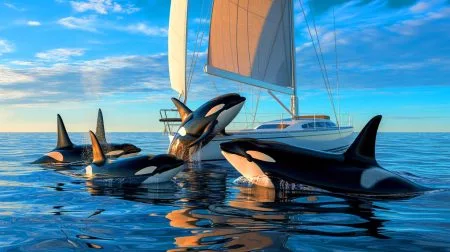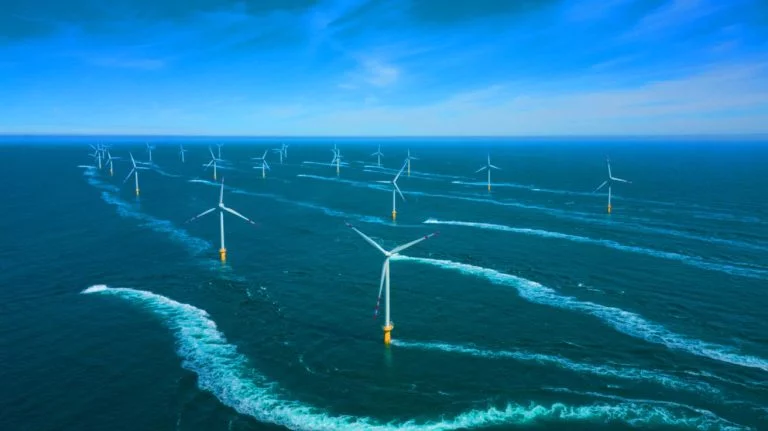| IN A NUTSHELL |
|
In recent years, offshore wind farms have emerged as a crucial component of the global shift toward renewable energy. However, these installations face a significant challenge known as the wake effect. This phenomenon, characterized by turbulence generated by wind turbines, can substantially reduce the efficiency of downstream turbines. As the world increasingly relies on offshore wind energy, understanding and mitigating the wake effect becomes paramount. Researchers and industry leaders are actively working to develop strategies to minimize its impact, ensuring the optimal performance of these vital renewable energy sources.
Understanding the Wake Effect: A Complex Phenomenon
The wake effect occurs when the rotation of a wind turbine creates turbulence in the air, affecting the wind flow patterns behind it. This disruption can lead to reduced wind speeds and increased turbulence for turbines located downwind, resulting in a decrease in energy output. According to various studies, such as one published in Marine Policy, the wake effect can cause efficiency losses of up to 20% over distances of about 30 miles from the wind farms.
Research teams from institutions like the University of Bergen and the German Fraunhofer Institute are dedicated to understanding this phenomenon. Their efforts aim to develop precise predictive models that can help in planning and optimizing wind farm layouts. These models are crucial for identifying optimal turbine placements to reduce the wake effect’s impact, thereby enhancing the overall efficacy of offshore wind farms.
Innovative Solutions to Mitigate Wake Effects
To counteract the wake effect, researchers and industry leaders are exploring various innovative solutions. One such approach involves adjusting the orientation of the turbines. Projects like Siemens’ “Wake Adapt” propose slight alterations in turbine alignment when wind directions align with the turbines. This strategy helps in deflecting wake effects without compromising the turbine’s structural integrity.
Additionally, there is growing interest in novel turbine designs. Conventional three-blade turbines are being reconsidered in favor of tilted rotors, which might better mitigate wake effects. The POWER project, for instance, explores the deployment of ten “Touchwind” turbines to assess if their design can enhance electricity production per square mile while limiting wake effects. Such innovations could pave the way for more efficient and sustainable wind farms.
The Need for International Cooperation
The wake effect poses challenges that often transcend national boundaries, underscoring the need for international cooperation. Offshore wind farms are frequently located in shared marine spaces, where their operations can affect neighboring countries. Consequently, establishing clear regulatory frameworks and agreements among coastal states is vital to address this issue collectively and ensure a coordinated energy transition.
As Eirik Finserås, a candidate at the University of Bergen’s Faculty of Law, notes, while the Convention on the Law of the Sea does not explicitly impose limitations, it suggests that countries should notify and consult others if their offshore wind farms have transboundary wake effects. Such cooperation is essential for maximizing the efficiency and sustainability of offshore wind energy, offering a path forward in the global renewable energy landscape.
Advancing Offshore Wind Energy Through Collaboration and Innovation
In conclusion, the wake effect remains a significant challenge for offshore wind farms. However, through continued research, innovative solutions, and international collaboration, the renewable energy sector is making strides in overcoming this obstacle. Efforts to refine predictive models, adjust turbine designs, and enhance cross-border cooperation are crucial steps in maximizing the potential of offshore wind energy.
As we continue to harness the power of the wind, the question remains: how will future innovations and collaborations shape the evolution of offshore wind energy and its role in our sustainable future?
Did you like it? 4.6/5 (25)






Interesting read! But how come this is only becoming an issue now? 🤔
Thanks for shedding light on the wake effect. It’s not something I was aware of before. 🙌
Why don’t they just space out the turbines more to avoid the wake effect?
Are there any environmental impacts associated with these new turbine designs?
This article is very informative. Great job!
Seems like a lot of effort for just 20% efficiency loss. Is it really worth it? 🤷♂️
Is there a timeline for when these innovations might be implemented? ⏳